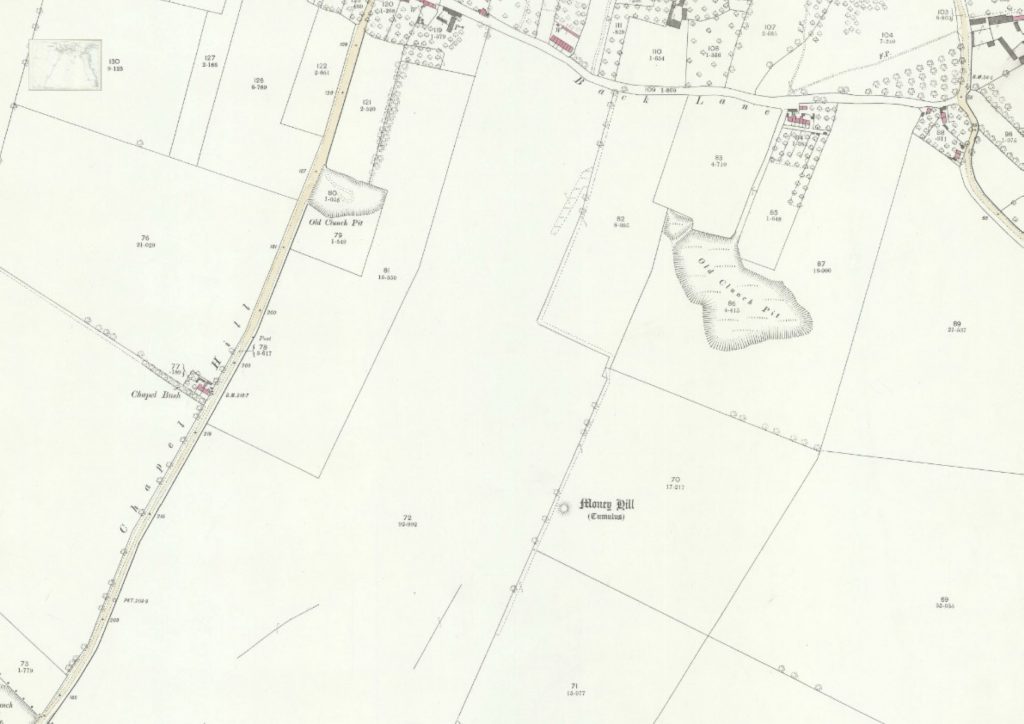(A 1000 YEARS OF HISTORY AND SO MUCH MORE)

Did you know…
There are many tales passed down through the generations as to the chapel’s origins and proof of its existence is recorded in documents from Bishop Alcock in 1488
He writes of chapel repairs to the ‘Chapel of BVM Whightehill’
Although it is presumed at this time that whighte was referring to the white chalk clunch pits and quarry, the derivation of whighte could be weyte which meant wait. This sounds likely as the hill was an important lookout point over the Saxon settlement.
Rev.E.Conybeare in his ‘History of Cambridgeshire’ written in 1897 describes it as once being a famous place of pilgrimage. The Mare Way or Mary Way ended at the point where 84 churches could be visible from Ely in a sweeping view from Ely across as far as the Dunstable Downs.
It is recorded that the chapel was seen to contain a huge pair of shackles believed to be those with which Lord Scales was kept imprisoned in France in the Battle of Crecy, at the time of King Edward III. They were placed in the chapel in thanks for his escape.
A small roadside cottage known as Chapel Bush stood on the site of the chapel until early in the 20th Century. It can be seen on the Ordnance survey maps from 1887. A bulla of Pope Martin V (1417-1431), a 1 1/2 inch lead disc, was found on the site in 1897.
It is a tradition of All Saints Church to walk up Chapel Hill on Easter morning to witness the dawn. The vicar leads a prayer and a hymn is sung around a lighted brazier. A flame from the brazier is taken down to the church in a lantern from which the Paschal candle is lit at the Easter morning service.
The experience is deeply moving and a truly ancient link to the past. Chapel Hill, to me personally, is as significant as Avebury or Stonehenge. It is such a spiritual and significant point as the flat area of Cambridge and fenland stretch out before us. For 700 years the church has nestled at the base of the hill where thousands trod on their way to the awe inspiring Ely Cathedral.
The image of a railway cutting slicing through the hill and stretching out over the fields and over the river to Harston is truly appalling. A desecration of this region’s history and the first chalk hill rising out of the flat landscape of Cambridgeshire.
Jennifer Gore, Churchwarden, All Saints Haslingfield


9 replies on “FROM ERMINE STREET TO CHAPEL HILL”
Lovely post, a symbol of all of the good things we will lose, not least the sanctuary of our homes, gardens and family life. No more peace and bird song 24/7 no more views no more connection between villages etc etc..
Thankyou. I have recordings of the dawn chorus as I walk up the hill each Easter morn. It is magical.
I contemplated spending the rest of my years on this planet with noise cancelling ear phones..but then I wouldn’t be able to hear bird song or the wind or my grandbabies..
We will all lose so much! I have written my letter, as I don’t suppose we’ll all get a chance to speak at our PC. AGM on 22nd. We need to ensure the Northern approach gets a fair hearing & proper action is taken!
The environmental impacts of EWR Preferred Alignment go on …. and on …. and on. EWR is truly a catalyst for irreparable damage. This is not a good option ….. Northern Route is the best option.
Do EWR’s plans take into account the rising water levels (by as much as 10m/33ft) that are predicted for Cambridgeshire by 2040?
The chapel of Our Lady on White Hill was a very important pilgrimage site for hundreds of years. Surely such pilgrimage sites (e.g. Walsingham) should be preserved for posterity and not obliterated by EWR?
Please look at the Northern route as an option for the EWR line as well.
From a white chapel to a white elephant. Is this what the Government
thinks of its communities?.